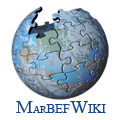The high local-scale species diversity of marine meiofauna, and of nematodes in particular, has puzzled ecologists for decades. Both pronounced niche differentiation and neutral dynamics have been suggested as mechanisms underlying that high diversity. Differential resource use is the most plausible basis for niche differentiation, yet the vast majority of studies demonstrating that this is prominent in marine nematodes are based on laboratory experiments on single species or highly simplified assemblages. Only a small number of studies have investigated resource differentiation under natural conditions. Here we use natural stable-isotope ratios of carbon and nitrogen, as well as fatty-acid profiles, to assess differential resource use and trophic structure in nine abundant estuarine tidal flat nematode species, comprising different presumed feeding modes (deposit feeders, epistratum feeders, predators) and resource guilds (herbivores, carnivores) based on buccal cavity morphology. Nematodes comprise up to three different trophic levels (from primary to tertiary consumers), yet with the exception of some herbivores, omnivory is prominent. Bivariate isotopic niche spaces were of similar size among most species, irrespective of their trophic level. Herbivory not only contributed importantly to the nutrition of suspected herbivores, but also to that of species that were previously considered carnivores based on the morphology of their buccal cavity. Herbivory mainly targets diatoms in some nematode species, yet includes dinoflagellates in others. Bacteria, in contrast, appear to be of limited nutritional importance. Odontophora setosus is identified as a predator/omnivore (possibly of heterotrophic protists) with a trophic level in between that of secondary and tertiary consumers. Our study thus demonstrates that resource differentiation is pronounced among as well as within nematode feeding modes and resource guilds. However, this study included only the most abundant species of the in situ community, hence it remains to be established whether and to what extent its conclusions can be extrapolated to entire, often highly species-rich communities.
 |
Marine Biodiversity and Ecosystem Functioning EU Network of Excellence |











